Resource Management Software | Employee Performance Tracking Software
Blog
Why Mid-Scale Companies Are Ditching Multiple Software Licenses for Unified Solutions: A Cost-Benefit Analysis

As mid-scale companies grow, they face a unique challenge: managing multiple business functions with limited resources. Traditionally, this has meant investing in various specialized software tools—for example, one for applicant tracking, another for project management, a third for HR, and yet another for time tracking. However, this approach comes with its own set of complications, including high licensing fees, data silos, and limited integration across departments.
Today, many mid-scale companies are moving towards unified solutions that bring together these functionalities into a single platform. This isn’t just about simplifying software management—it’s a strategic choice that offers both cost savings and operational benefits. In this blog, we’ll explore why unified solutions are becoming the preferred choice for mid-scale companies and assess the cost-benefit aspects that make them a smart investment.
The Cost of Multiple Software Licenses
Before discussing the benefits of unified solutions, it’s crucial to understand the financial and operational burdens that come with managing multiple software licenses for functions like ATS, resource management, and project tracking.
- High Licensing Fees: Each specialized tool requires a separate license, and costs increase as companies add users or expand features. For a mid-scale organization with a tight budget, maintaining multiple licenses can quickly become financially unsustainable.
- Training and Onboarding Costs: Each software requires specific training, increasing the time and resources needed to onboard new employees. Learning multiple systems delays employees’ ability to work efficiently.
- Maintenance and Upgrades: Each software requires separate maintenance, updates, and troubleshooting. This means the IT department spends considerable time on software management, which could otherwise be focused on strategic initiatives.
- Integration Complexities: Different tools often lack seamless integration, leading to additional resources spent on manual data synchronization or creating custom workarounds. This fragmentation results in inefficiencies and data inconsistencies.
By the time a company addresses these issues, the financial and operational burden of managing multiple software licenses becomes hard to ignore. This has driven many companies to consider unified solutions that offer comprehensive functionality under one roof.
The Benefits of Unified Solutions
Unified solutions address these challenges head-on. Here’s an in-depth look at why these solutions are particularly valuable for mid-scale companies and the cost-benefit advantages they provide.
- Cost Savings Across Multiple Functions
The most immediate benefit of adopting a unified solution is the reduction in costs across various departments. Instead of paying for multiple licenses, companies invest in a single platform that covers multiple functions, from ATS to time tracking.
- Single Licensing Fee: With a unified platform, there’s only one licensing fee, which streamlines budgeting and can significantly reduce annual software expenses.
- Reduced Training Costs: Instead of training employees on multiple platforms, companies can focus on one comprehensive training program. This not only saves time and resources but also accelerates the onboarding process.
- Lower IT Maintenance Costs: Managing updates, security patches, and technical support is simpler with a single platform, allowing the IT team to focus on more strategic tasks.
These cost savings quickly add up, providing a substantial return on investment for mid-scale companies aiming to optimize their budgets while maintaining comprehensive functionality.
- Improved Workflow Efficiency Across Departments
Unified solutions enhance workflow efficiency by centralizing data and automating processes across multiple business areas, including ATS, RM, PMS, and time tracking.
- Centralized Data Management: With a unified solution, all data—from applicant information in ATS to project updates and resource allocation—is stored in one place. This reduces time spent locating information and improves interdepartmental collaboration.
- Automated Processes: Unified platforms often include automation features like scheduling interviews in ATS, generating project status reports, and sending notifications for resource availability. This reduces the workload on employees and allows them to focus on higher-level tasks.
- Simplified Reporting: Generating reports from multiple tools can be cumbersome. Unified solutions allow for cross-functional reporting, providing managers with a holistic view of performance metrics without the need for manual aggregation.
This efficiency boost results in a more agile organization, enabling mid-scale companies to adapt quickly to changes, improve productivity, and respond promptly to project and resource needs.
- Elimination of Redundant Processes and Data Silos
One of the most common issues with using multiple software tools is data redundancy and the formation of silos. Each department might rely on a separate platform, leading to duplicated data entry and limited visibility across the organization.
Unified solutions create a single source of truth for all departments:
- Reduced Data Duplication: Since data is entered once and shared across functions, there’s no need for duplicate entries, reducing the risk of human error.
- Improved Data Consistency: With centralized data, all departments—such as HR, project management, and finance—access the same information, ensuring consistency. This is especially valuable for decision-makers who rely on accurate data.
- Cross-Functional Collaboration: Unified solutions enhance collaboration by making data accessible across departments. For instance, HR and project management can easily share data on resource availability, making it easier to allocate the right talent to the right projects.
By eliminating redundant processes and data silos, companies can operate more cohesively, improving overall efficiency and collaboration.
- Enhanced Data Security and Compliance
Data security is crucial for mid-scale companies handling sensitive information. Managing multiple software licenses often means different security protocols, which can increase vulnerability.
Unified solutions provide comprehensive security measures across the platform:
- Consistent Security Standards: With a unified solution, security protocols are standardized across all functions, reducing vulnerabilities and easing compliance with industry regulations.
- Centralized Access Controls: With all data stored in one place, managing user permissions becomes straightforward. Companies can control access to sensitive information, ensuring that only authorized personnel view critical data.
- Automated Compliance Reporting: Compliance requirements, like GDPR or labor laws, are easier to manage within a unified system. For instance, data access and usage are automatically logged, making compliance audits simpler.
These security features protect mid-scale companies from data breaches and regulatory penalties, adding another layer of value to the unified solution.
- Scalability and Flexibility for Growing Needs
As mid-scale companies grow, so do their operational needs. Managing more users, expanding departments, and increasing data volume can make scaling multiple software tools expensive and complicated. Unified solutions are designed with scalability in mind.
- Easy User Management: Adding new users and setting up roles and permissions is simplified with a unified platform, allowing companies to scale without purchasing additional licenses for each tool.
- Flexible Functionality: Unified solutions often include modular functionalities, enabling companies to activate or deactivate features as needed. For instance, a company might start with HR and project management modules and add time tracking as the organization grows.
- Cost-Effective Scaling: Unified platforms are designed to handle increased data and user demands, making scaling more affordable than managing multiple licenses. This ensures that the solution continues to meet organizational needs without excessive costs.
Scalability is essential for mid-scale companies looking to grow sustainably, making unified solutions an ideal choice for long-term success.
Conclusion: Why the Shift to Unified Solutions Makes Sense
For mid-scale companies aiming for operational efficiency and cost savings, shifting from multiple software licenses to a unified solution is more than a trend—it’s a strategic move with long-term benefits. By consolidating data, processes, and functionalities across functions like ATS, HR, project management, and time tracking, unified solutions help companies reduce costs, eliminate redundancies, enhance security, and streamline workflows.
These advantages lead to a higher return on investment, equipping mid-scale companies with the agility and efficiency needed to compete in a fast-paced business environment. In a landscape where data accuracy, security, and operational efficiency are essential, unified solutions stand out as a transformative choice for mid-scale companies ready to take their operations to the next level.

